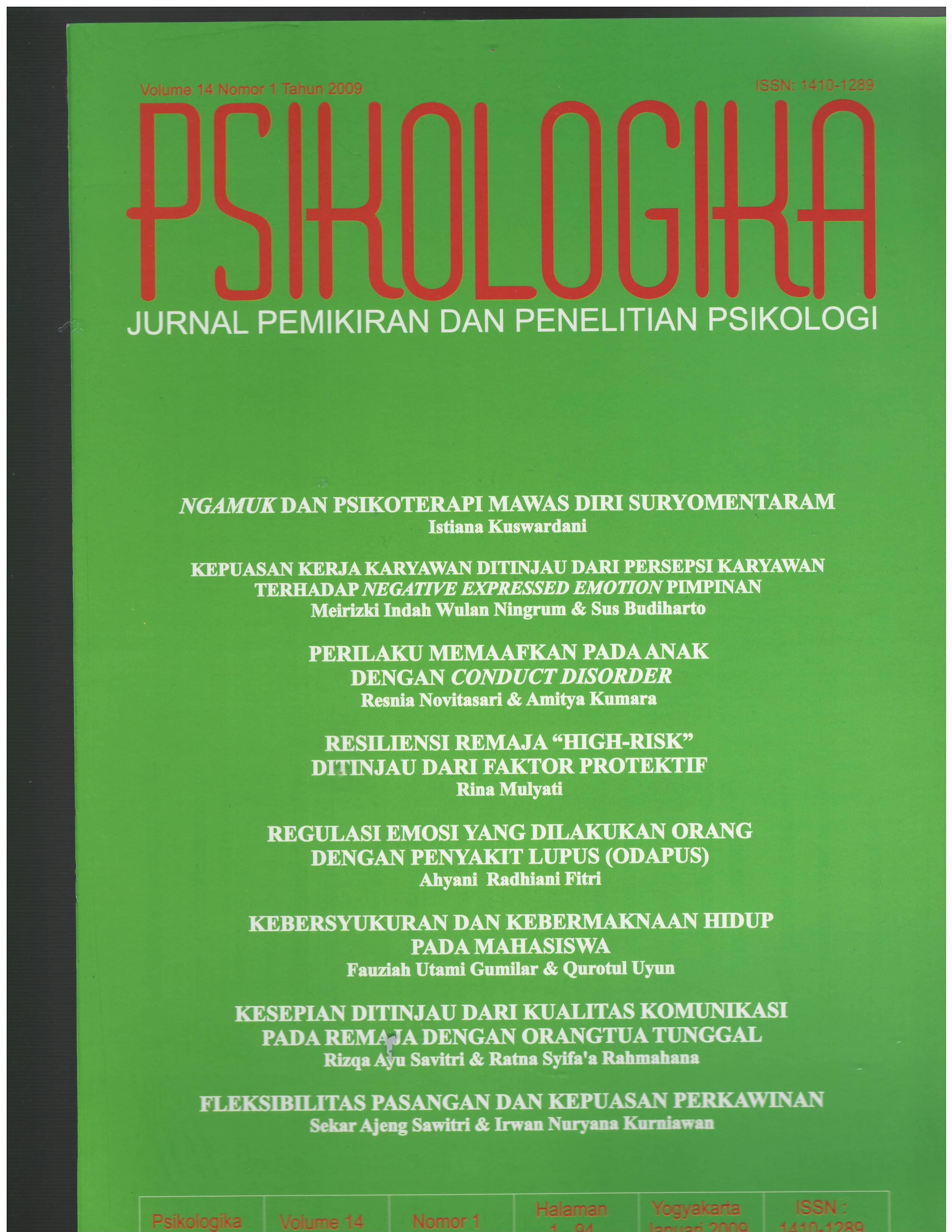Main Article Content
Abstract
The purpose of this reseach was to examine the relationship between couple flexibility and level of marital satisfaction. The respondents were couples with children of their own and they have steady job. Data collected using Couple Flexibility Scale (Olson dan DeFrain, 2003) and Marital Satisfaction Scale. Couple Flexibility has 6 aspect, those were leadership, dicipline, negotiation, role and responsibility, rules and changes whereas Marital Satisfaction has 14 aspects: spouse personality, equality in roles dan tasks, communication, conflict resolution, financial arrangement, spare time activities, sexual relationship, relationship with children, relatives and friends, religious orientation, ambition, love and passion. Data analyzed using Spearman rho technique show that the fleksibility of couple related to their level of marital satisfaction. The contributions (highest to lowest) of each aspect of flexibility to marital satisfaction's level were: disipline (r=0,700), roles and responsibility (r=0,694), leadership (r=0,676), negotiation (r=0,676), changes (r=0,584) and rules (r=0,491). Moreover, the result could also predict the occurance of one aspect in each variable when other aspect in other variable known.
Keyword s: couple flexibility, marital satisfacton
Keyword s: couple flexibility, marital satisfacton
Article Details
License
Authors who publish with this journal agree to the following terms:
- Authors retain copyright and grant the journal right of first publication with the work simultaneously licensed under a Creative Commons Attribution-ShareAlike 4.0 International License that allows others to share the work with an acknowledgment of the work's authorship and initial publication in this journal.
- Authors are able to enter into separate, additional contractual arrangements for the non-exclusive distribution of the journal's published version of the work (e.g., post it to an institutional repository or publish it in a book), with an acknowledgment of its initial publication in this journal.
- Authors are permitted and encouraged to post their work online (e.g., in institutional repositories or on their website) prior to and during the submission process, as it can lead to productive exchanges, as well as earlier and greater citation of published work (See The Effect of Open Access).




